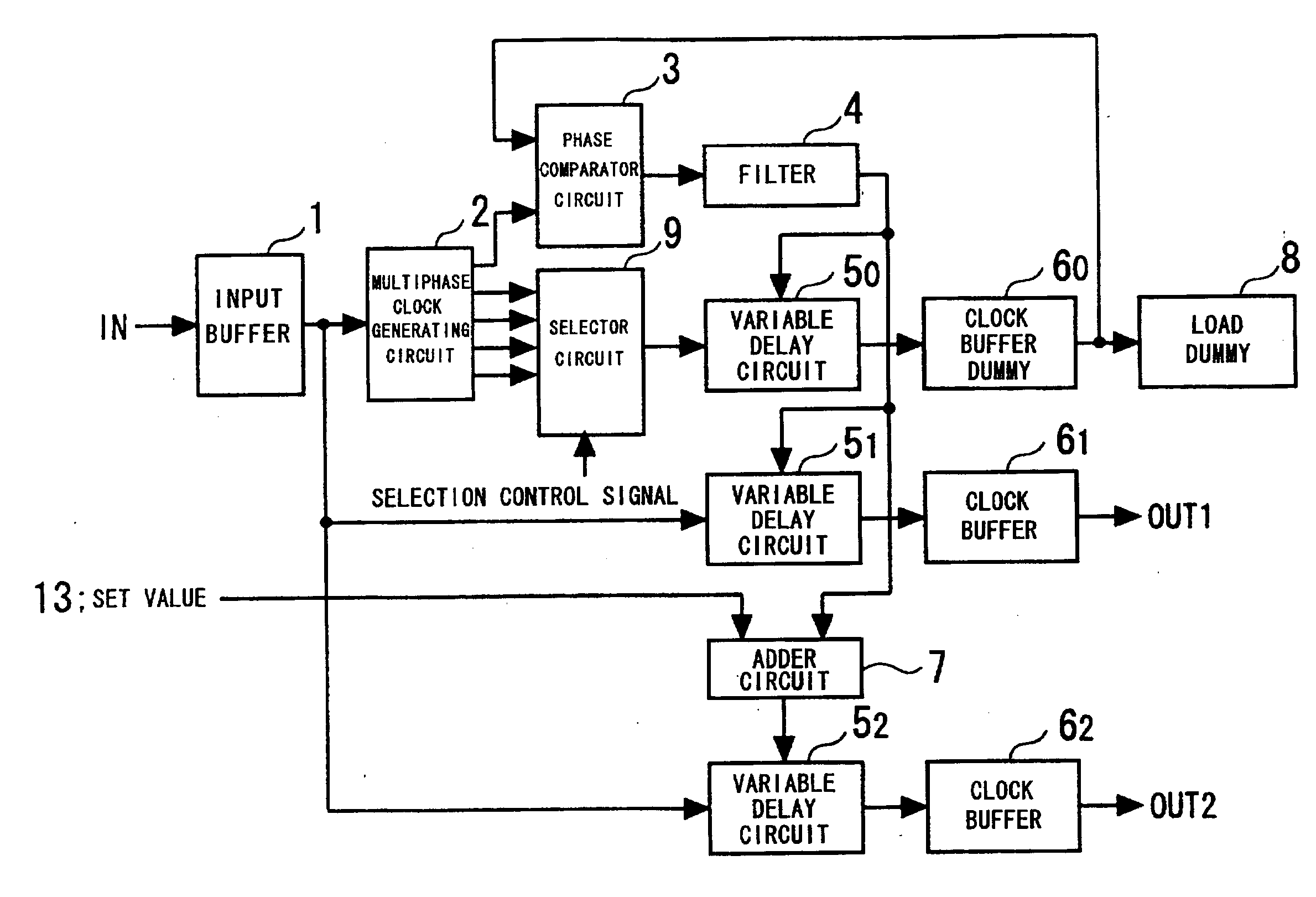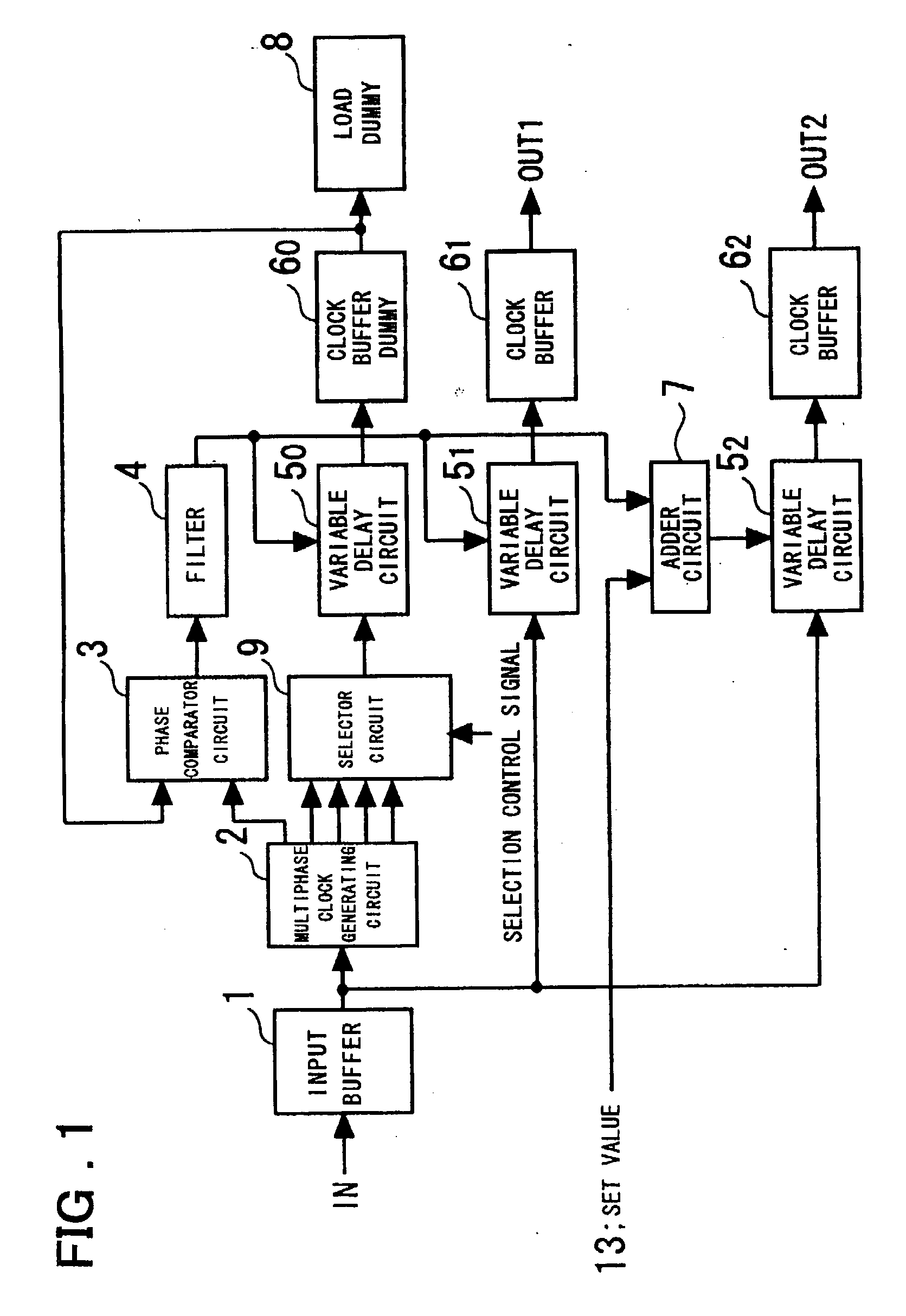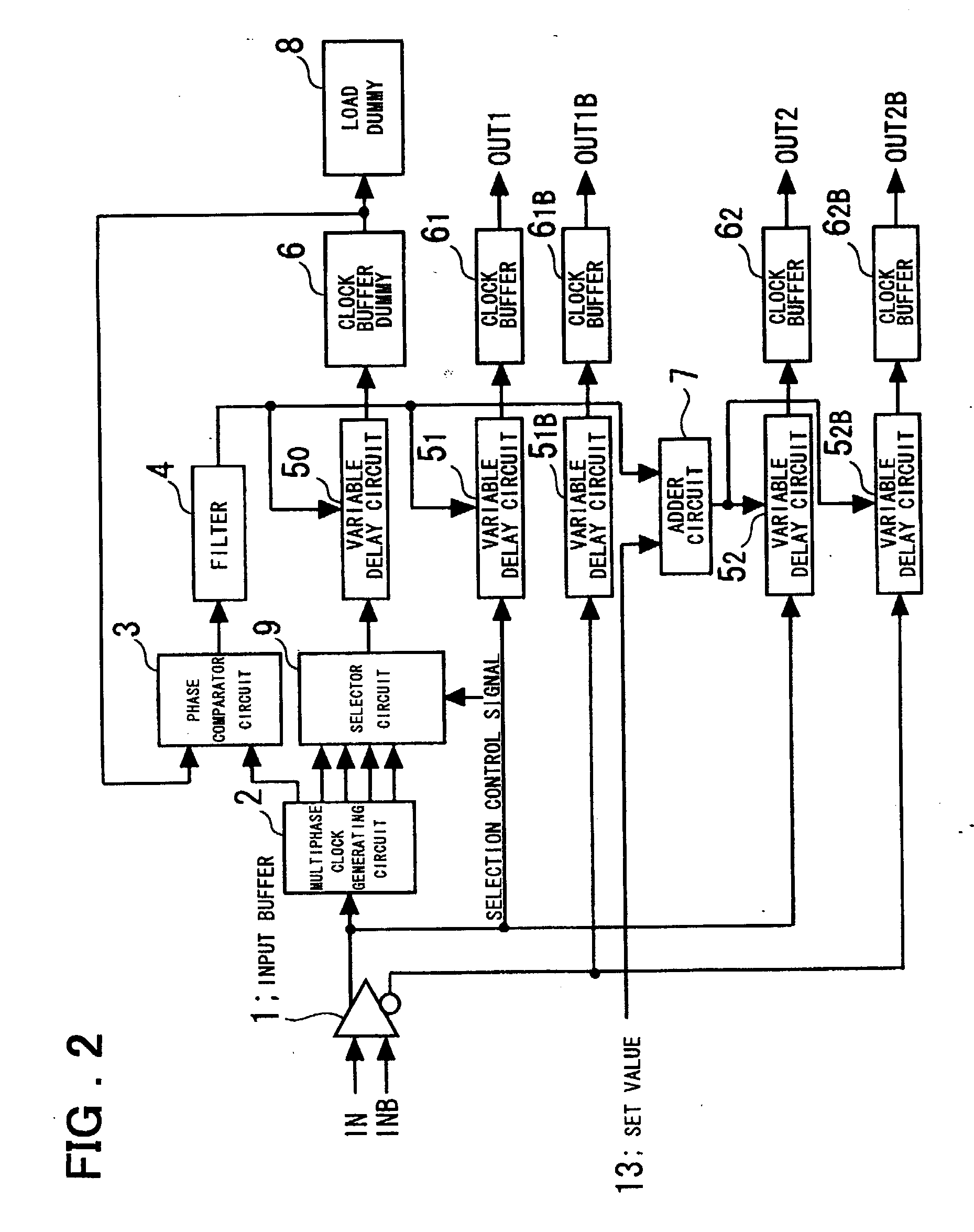Clock control circuit and method
a control circuit and clock technology, applied in the direction of generating/distributing signals, pulse techniques, instruments, etc., can solve the problem of difficult to generate correctly a signal of a desired phas
- Summary
- Abstract
- Description
- Claims
- Application Information
AI Technical Summary
Benefits of technology
Problems solved by technology
Method used
Image
Examples
first embodiment
[0068] The operation of the invention shown in FIG. 1 will now be described.
[0069] The selector circuit 9 selects a clock (a clock having an ith phase), which has a described phase relationship with respect to the clock supplied to the phase comparator circuit 3, from among the multiphase clocks output from the multiphase clock generating circuit 2. The phase comparator circuit 3 is controlled in such a manner that the delay time of the variable delay circuit 5.sub.0 and clock buffer dummy 6.sub.0 will become equal to this phase difference, the output OUT1 delivers a first clock signal having a desired phase difference with respect to the input clock, and the output OUT2 delivers a second clock signal having a desired phase difference with respect to the first clock signal output from the output OUT1. The selection made by the selector circuit 9 may be in response to a selection control signal from a CPU (not shown) or a selection control signal that is applied externally. For examp...
second embodiment
[0090] As for the generation of the phase difference, several arrangements are applicable in addition to the above-described arrangement of the multiphase clock generating circuit and selector circuit. the invention having an interpolator-based phase-difference generating circuit will be described next.
[0091] FIG. 8 is a block diagram illustrating the structure of a second embodiment of the present invention.
[0092] As shown in FIG. 8, a clock control circuit in accordance with the second embodiment of the invention comprises: a phase-difference generating circuit 10, to which the output signal of the input buffer 1 is provided, for outputting first and second signals a, b obtained by delaying the output signal of input buffer 1 by a predetermined phase difference on the basis of a phase decision information 14 received; the variable delay circuit 5.sub.0 for delaying the second output b of the phase-difference generating circuit 10; the clock buffer dummy 6.sub.0 for driving the out...
third embodiment
[0115] FIG. 14 is a diagram showing the structure of the phase-difference generating circuit 10A (see FIGS. 12, 13) in the present invention. As shown in FIG. 14, the phase-difference generating circuit 10A comprises the frequency divider circuit 101 for frequency-dividing an input clock by eight; the first D-type flip-flop 102.sub.1 for sampling the frequency-divided clock by the frequency divider circuit 101 with the input clock; the second D-type flip-flop 102.sub.2 for sampling the output A of the first D-type flip-flop 102.sub.1 with the input clock; the first interpolator 103.sub.1, to which outputs A, B of the first and second flip-flops 102.sub.1, 102.sub.2 are input, for producing an output signal having a delay time decided by a time obtained by performing an interior division of the timing difference between the two outputs by a first interior-division ratio on the basis of a control signal (control code) S[0:31] constituting the phase decision information 14; a third D-t...
PUM
 Login to View More
Login to View More Abstract
Description
Claims
Application Information
 Login to View More
Login to View More - R&D
- Intellectual Property
- Life Sciences
- Materials
- Tech Scout
- Unparalleled Data Quality
- Higher Quality Content
- 60% Fewer Hallucinations
Browse by: Latest US Patents, China's latest patents, Technical Efficacy Thesaurus, Application Domain, Technology Topic, Popular Technical Reports.
© 2025 PatSnap. All rights reserved.Legal|Privacy policy|Modern Slavery Act Transparency Statement|Sitemap|About US| Contact US: help@patsnap.com



